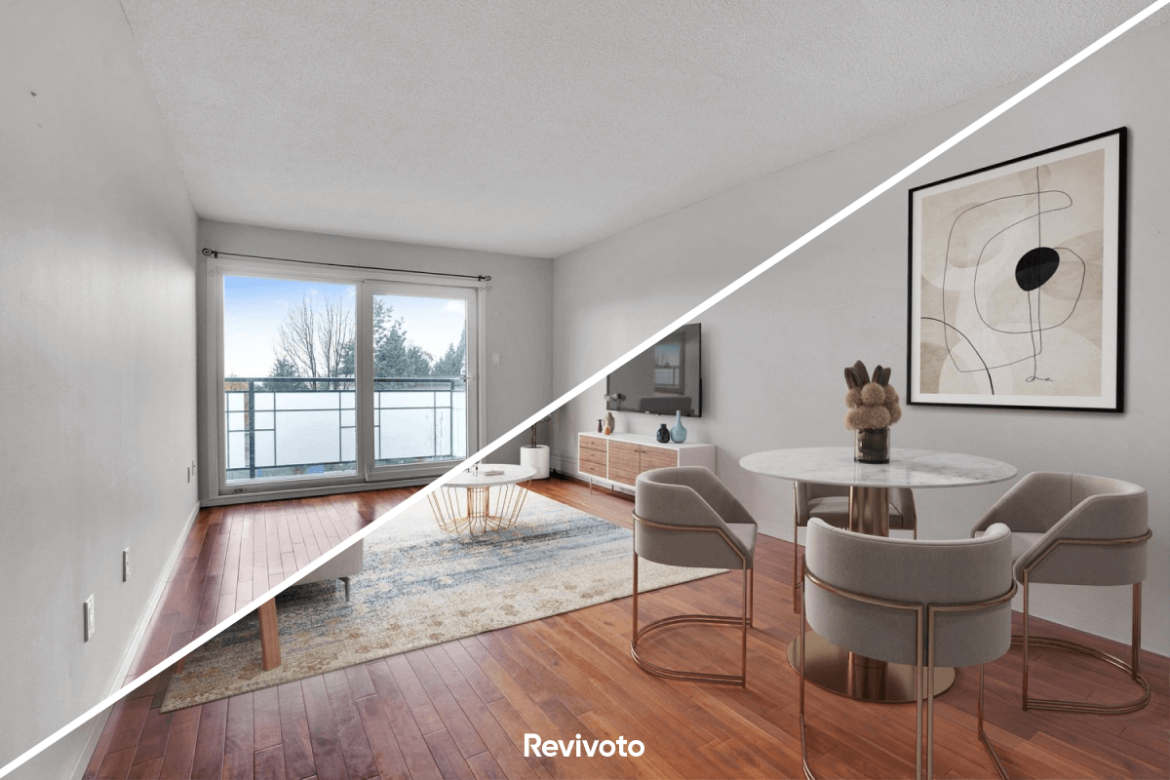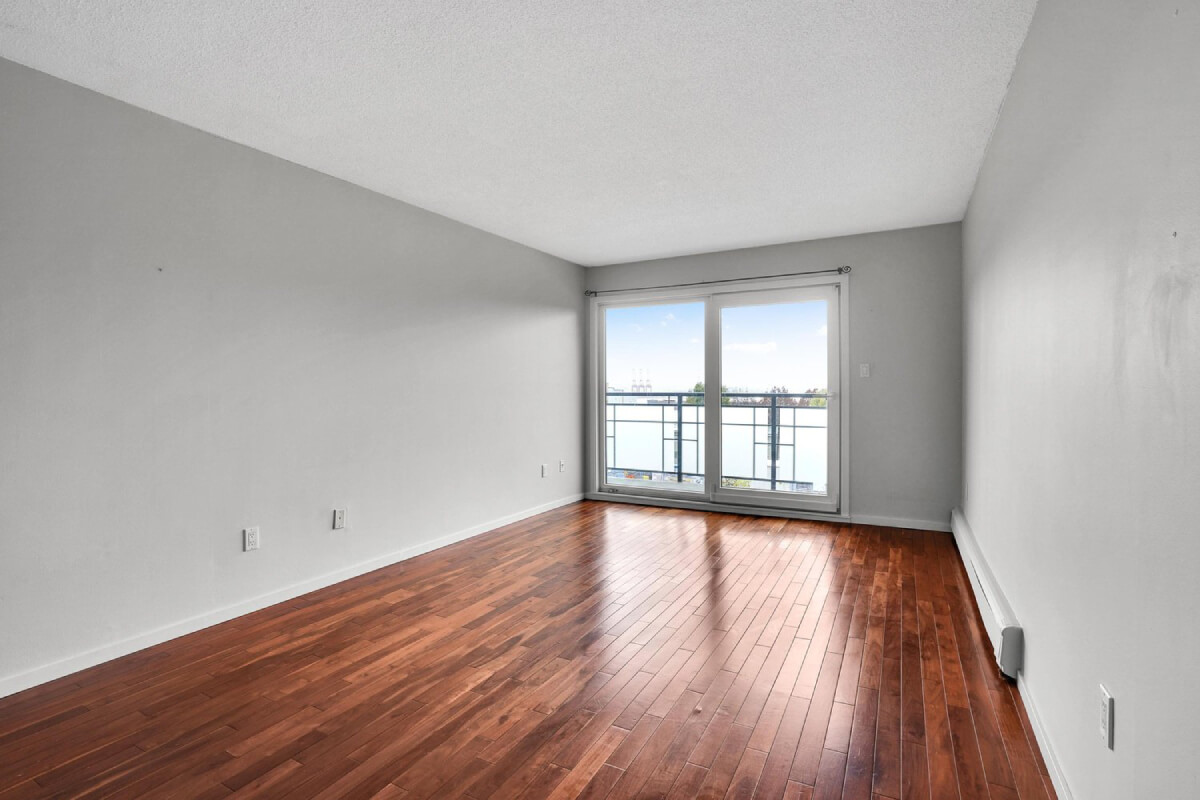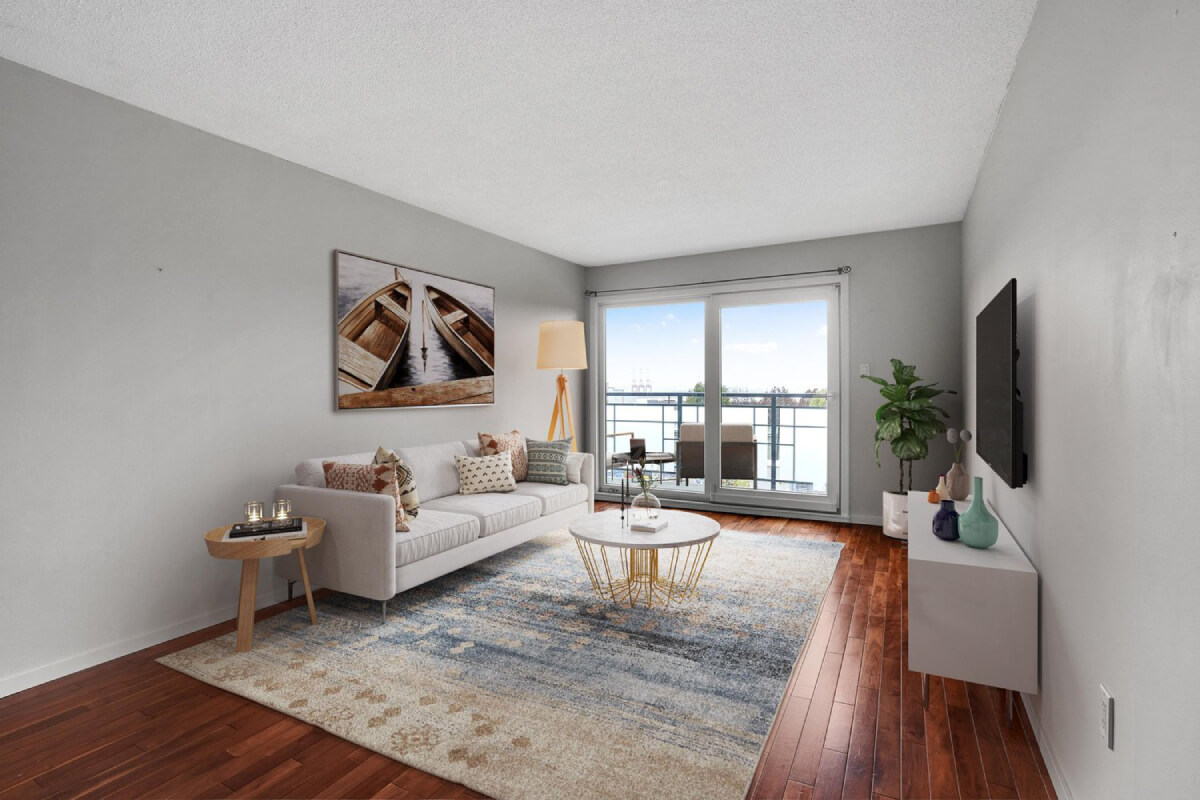Real estate virtual staging is the process of digitally furnishing empty or furnished spaces in your listing photos for real estate marketing. Let’s see how it works!
Explaining real estate virtual staging is impossible without discussing what staging is in real estate and why it has become an effective marketing tool for agents. Furthermore, we must understand all virtual staging applications and how each can benefit those in the real estate industry.
In this article, we’re going to not only examine virtual staging’s applications and benefits, but we’re going to compare those applications to those of traditional staging, compare the cost of both methods, and, last but not least, we’re going to make sure whether applying virtual staging is considered legal or not.
To order virtual staging at an unbeatable price click below!!
Table of Contents
Real Estate Staging
We all have our imaginations, but when it comes to buying real estate, we could use some help. Buying a house is one of the most important purchases of our lives. It may seem that it is only a rational decision based on numbers, but it is not just that. It is also an emotional one. It projects our taste, identity, and lifestyle.
As property owners, realtors, or photographers, you want to show “what it is like to live in this house.” If you are the photographer, you try to capture all the possibilities and provide the future buyer with visual content. There are two situations while you are at the estate: The property has a resident and is furnished, or it is vacant with no furniture.
If the property is occupied, the décor reflects the taste of the current tenant. That is an issue for the visualization process; It is challenging to see beyond the clutter of personal items, in person or from pictures.
If empty, you see the potential while you are there, but the prospective buyer only looks at pictures. It is hard to imagine a property furnished when you are in it. It is harder to do so through images. You cannot walk around and see if the dining table would look good there. So, you are facing a dilemma: how to dress up the emptiness?
In either situation, the property makes the wrong first impression, which is not what you want. Your goal is to hook the potential buyers and invite them to consider buying the property.
Before staging, real estate agents would give some pointers to the owners to facilitate the selling process and minimize defects. They would recommend tidying the place up or painting the walls. In the 70s, the term home staging was professionally born. Around 2000, this concept was used around the globe with different names: home-styling, property presentation, property styling, or even house-doctoring.
However, the core of all these expressions is the same. Real estate staging is a delicate setting that shows possibilities but leaves room for imagination.
By arranging the furniture and decoration in a universally appealing way, you attract many potential buyers and get the highest possible offer.
Research on staging and the real estate market shows that staging:
- Makes it easier to imagine oneself living there.
- Provides aesthetic and emotional appeal.
- Clarifies the livability.
- Has a substantial effect on the overall impression of the estate.
- Raises the chance of buyers visiting the listing.
That is why staging or virtual staging is so important.
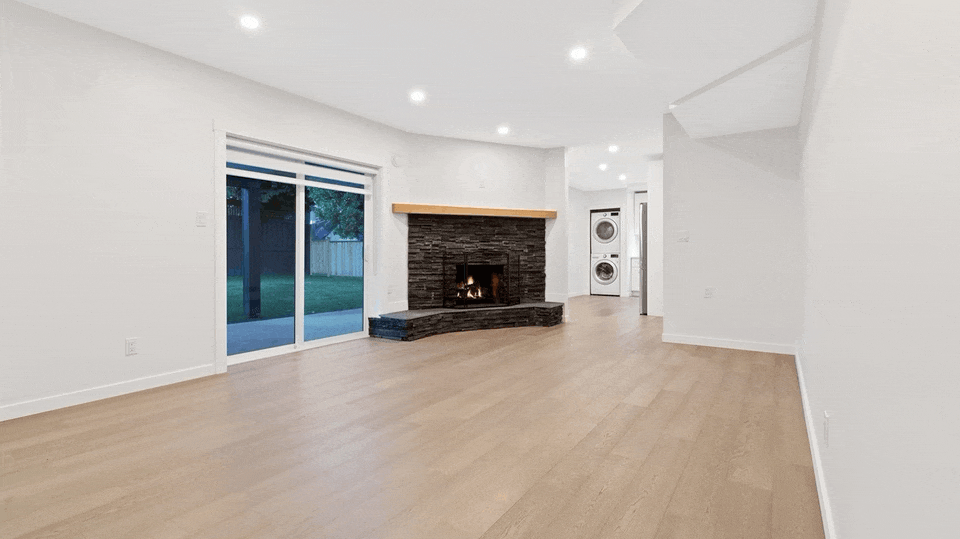
Source: Revivoto.com
To order virtual staging at an unbeatable price click below!!
About Real Estate Virtual Staging
We all understand what virtual is, but defining it can be tricky. There are various interpretations for virtual, like:
- A type of ideal reality.
- Not real, but seems real.
- Opposite to actual.
In the twenty-first century, reality has gone beyond what we can touch. So, we cannot assume just because something is virtual, it is not real. In other words, virtual is not the opposite of real.
We have an understanding of the world we live in, and when we create anything virtual, our knowledge comes along. We are not making a new reality from scratch. We are only moving our existing reality to a unique setting and environment.
Therefore, we can say that virtual has roots in our natural world. It is based on our sensations, which is why it’s relatable.
Putting all these above points together, in this context, virtual is:
A replicated model of something physically; is made by a person using a computer or by artificial intelligence (AI).
Now let’s see how virtual staging in real estate works.
Real estate virtual staging is the process of adding furniture and decor to the photo of a room or home using digital tools. Professional graphic designers sometimes do this to enhance real estate value. However, there are apps and software that can do it for you.
As the owner or the realtor, you have an actual house you want to sell. And now you want to stage it virtually. You are not changing anything on the property; you are not bringing couches and sculptures inside the house. All the alterations are done in the digital world.
In a gist, you create a virtual reality (VR) of the property but not a new reality. Virtual staging does not equal misrepresentation. It does not mean you are turning the estate into something else or something that it isn’t. So, what does it mean?
Imagine holding a magic pen in one hand and a photograph in another. You can add anything to this room. You only need to draw it, and it’s done. This is how real estate virtual staging works. Instead of a make-over in the actual house, you make changes to the pictures.
While traditional staging happens before the shoot, virtual staging is done after. To start, you need pictures of the estate. It does not matter if the property is occupied or vacant. Sometimes you may even stage a house under construction. You are all still dealing with a picture, but it is not taken by a camera but created by VR. This way, you are traveling to the future and staging the house currently in the process of development.
These days, many real estate virtual staging companies offer solutions that can help real estate agents, homeowners, or builders sell a home faster and at higher prices. So, you can virtually furnish an entire room and show the photo to potential buyers, helping them visualize their future home with ease. Your property will no longer look empty and cold or reflect the taste of the current resident.
Virtual Staging vs. Real Staging
Traditional staging and virtual staging are comparable in different aspects, including their cost, needed time, available options, created experience, required manual work, availability in various structures, and the level of inclusivity.
While each has its pros and cons, virtual staging is the appropriate choice for the requirements of the 21st century. Everything you could do while staging, you can do with virtual staging. You can:
- Add furniture to an empty room.
- Remove the existing furniture and replace them.
- Change the color of the walls.
- Include accessories where you want.
- Get rid of clutter made by excessive decorations.
- Remove personal items.
Anything is possible, and you can go beyond the restrictions of traditional staging. You spend less time, money, and energy, yet you get the same result. It is safe to say that with virtual staging, less is more!
Benefits of Real Estate Virtual Staging
Research on the impacts of virtual reality on real estate listings has proved the advantages of virtual staging. The buyer and the realtor benefit from these advantages, making real estate virtual staging important.
The advantages of real estate virtual staging are numerous; among them:
- It allows the buyers to visualize the home and imagine how it will look once it is furnished, helping them to think about the prospects and perks of living there.
- It helps your home to look its best, so you can sell it faster and at a better price.
- It is cost-effective; there is no need to pay for a professional staging service.
- It can be done quickly, anytime, and anywhere.
- The look and feel of the property are totally under your control, and you can easily change anything that does not look good.
- Many virtual staging designs are available, so you can try out as many settings as you like and choose among them.
- You can stage any pictures. It can be virtual images of a developing house, photos of an empty grand hall, a multi-level office space, or a wedding venue. These can be virtually staged like any other picture.
Shortcomings of Virtual Staging
Since all the added charm is only happening in the pictures, there are some cons to using virtual staging:
- When homebuyers visit the property, they are either faced with an empty room or a different style of furnishing and decoration.
Solution: Put printouts of virtually staged images of each room on the showing day. You can also benefit from 360 virtual staging. This way, visitors can tour the place while checking its virtual on their phones.
- Virtual staging requires expertise in both styling and graphic design. An out-of-sorts, virtually staged image can act as a repellant instead of an inviting visual effect.
Solution: Use professional online services. Check customer satisfaction and the portfolio of the service provider before putting your virtual staging order.
- Nondisclosed virtual staging can lead to misrepresentation and disappointment of prospective buyers upon visit.
Solution: Use tags stating that the picture is virtually staged. Put the before and after pictures in your listing ad to avoid misunderstanding.
Preparing the Property for Virtual Staging
Since virtual staging works on taken photographs, one may assume no preparations are required. Of course, theoretically, there are no limits on virtually adding furniture and decoration, but in practice, you must prepare the property properly. The following are the basic tasks before using a virtual staging service:
Paint
It is best not to leave color changes to virtual staging. If you do so, you are creating a huge gap between staged photos and reality. This can result in disappointment for the buyers.
Repair
If there is a need to fix parts of the estate, do it before the shooting day. Virtual staging is not supposed to work as a cover-up tool. You may have a fixer-upper property on your hand; in such cases, you can go for a virtual renovation and show the homebuyers the potential while disclosing.
Clean
You must have a spotless space both indoors and outdoors. This will raise the quality of the shots. Clean glasses let the light in and assist you in capturing the property in its best way.
Clear
Remove personal items and non-matching furnishing items necessary. Remember to declutter the outdoors as well. You can do that before the shoot or use item removal services to get rid of eye-sours. Item removal also enables you to clear the whole room of any furniture and prepare the image for virtual staging.
Use professional photography
Virtual staging alters the photos that are taken from the estate. Having high-quality images with proper angles provides the best foundation for virtual staging.
Real Estate Virtual Staging Photography
There are trained photographers who work specifically in the real estate market. They know how to take pictures from a furnished or vacant room for later virtual staging. But if professional photography is not in your budget, don’t worry; we got you!
There are simple considerations that you can benefit from. Pointers like: cleaning the room, choosing a camera, and composition. We have gathered all the necessary guidelines to shoot a property for virtual staging for you.
Is Virtual Staging Legal?
The best answer here is the one lawyers always tell you before they explain: it depends!
Let’s see what the legality of real estate virtual staging depends on.
There are many dos and don’ts in real estate virtual staging, but the principal yardstick will be this:
Are you staging the estate, or are you changing it? You could easily avoid misrepresentation in both scenarios by stating that the images are virtually staged.
If you are making changes to the property itself, you must have a reason. Share that! For instance, tell the future buyers why you altered the color of the walls. As long as you are honest about virtual staging, you are staying in the legal domain.
Real Estate Virtual Staging Software
Virtual staging companies offer two types of services: professional virtual staging and DIY virtual staging. If you want to deploy a professional virtual staging tool, you must upload a photo or video of your property to their platform. You will specify what you want to be done to the photograph or video, and within a few hours, you will receive the photo of your virtually furnished space.
On the other hand, DIY requires some effort on your part. There are some secrets about how to stage an empty room or a furnished one effectively. You will need to learn to work with the virtual staging software, drop in 3D furniture, and create a stylish, virtually staged space.
With DIY virtual staging software, there are lots of possibilities for you to benefit from: you can boost colors and contrast, use filters to remove existing furniture, change the time of day, customize your tours, etc.
Compared to DIY virtual staging tools, professional services are a little more expensive, and you may not be able to use them on-demand (sometimes you have to wait 48 hours to get your photo), but they are easier to use and less time-consuming.
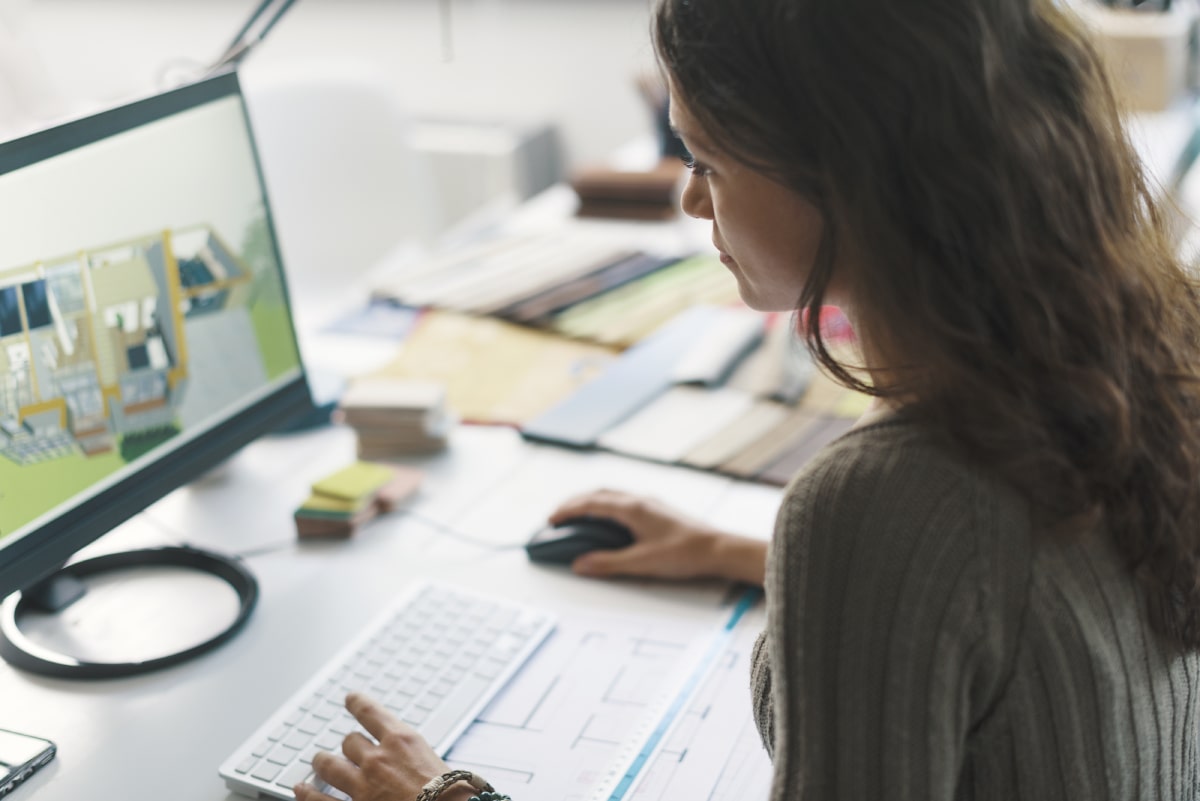
Real Estate Virtual Staging Costs
Traditional staging is significantly expensive considering the costs of bringing actual furnishing items into the estate. That is why real estate agents and homeowners prefer to use real estate virtual staging, which is a more cost-effective alternative. Depending on the type of service and its complexity, companies offer different pricing plans. You can choose the one that suits your needs best and is in line with your budget. The cost of real estate virtual staging service usually rests on the factors below:
- The number of rooms you want to be staged
- The amount of space that has to be covered
- The turnaround time needed to prepare the images.
Each virtually staged photo can cost somewhere between $30 to $150. However, it should be noted that some companies may charge more.
Final Remarks
We are living in the “time is money” era. The purchase habits of consumers in the real estate market have changed rapidly. Anyone who can’t keep up will be forced to forfeit. We cannot expect to make a profit by using a method developed in the twentieth century. Real estate virtual staging is what makes sense for agents and homeowners.
Virtual staging increases the potential buyer’s interest while saving time and money on both sides. It helps you to sell your property faster and at a higher price. While real or traditional staging seems to be a great way of presenting your listing, not just online but also in the real world, it demands a lot of work and is costly. That’s why it keeps you behind the competition.
Virtual staging is the perfect fit, considering the expenses and efforts needed for physical staging. Real estate virtual staging allows you to appeal to home-buyers with different tastes with the least possible spending.
To order virtual staging at an unbeatable price click below!!


